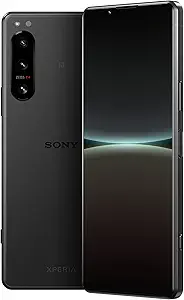In the dynamic world of smartphones, two brands have captured the attention of tech enthusiasts with their commitment to innovation and user-centric design: Sony and OnePlus. Renowned for their Xperia and OnePlus series respectively, these brands offer consumers a glimpse into the future of mobile technology. As we embark on a journey to compare and contrast Sony and OnePlus smartphones, we delve into the intricacies of their offerings, uncovering the strengths and distinctions that set them apart in this fiercely competitive market.
Key Features Comparison
Product Selection
Sony and OnePlus are two key players in the smartphone industry, each offering a diverse range of products to cater to different consumer needs. Sony smartphones, under the Xperia line, have been known for their high-quality displays, sound systems, and camera technologies, with their latest offering being the Xperia 1 III, which boasts a 4K HDR OLED display and a camera system developed with Sony's Alpha camera engineers. However, Sony's product selection is relatively limited compared to other brands, with their focus primarily on the premium segment. On the other hand, OnePlus offers a wider range of products, from budget to premium, catering to a broader audience. Their latest offerings include the OnePlus 9 Pro, which features a Hasselblad camera system, and the budget-friendly OnePlus Nord CE 5G. OnePlus is also known for its fast and smooth OxygenOS, which is appreciated by users for its near-stock Android experience. However, while OnePlus has a wider product selection, it has been criticized for its rapid product release cycle, which can lead to older models becoming obsolete quickly. Comparatively, Sony's slower release cycle ensures longer support and relevance for its devices. Both brands offer unique advantages in their product selection, with Sony's strength lying in its premium, high-quality offerings, and OnePlus's strength in its wider range and rapid innovation.
Design/Look
Sony smartphones have always been known for their unique and distinctive design. They often feature a rectangular shape with sharp edges, which is a stark contrast to the rounded edges that are commonly found on most smartphones today. Sony's latest Xperia 1 III, for instance, boasts a sleek and modern design with a glass front and back, and an aluminum frame. It also has an IP65/IP68 rating for dust and water resistance, which adds to its appeal. However, some users have found Sony's design to be a bit outdated and less ergonomic compared to other brands. On the other hand, OnePlus smartphones are often praised for their premium and ergonomic design. The OnePlus 9 Pro, for example, features an aluminum frame with a glass front and back, similar to Sony. However, it has a more contemporary design with its curved edges and slim profile. It also offers a more comfortable grip due to its rounded corners. OnePlus also experiments with different finishes and colors for their back panels, which gives users more options to choose from. However, unlike Sony, OnePlus phones do not have an official IP rating for dust and water resistance, which might be a drawback for some users.
Affordability
Sony smartphones, particularly their flagship models, are known for their high-end pricing. The latest Sony Xperia 1 III, for instance, is priced at around $1,300, which is on par with premium smartphones from brands like Apple and Samsung. The high price is justified by Sony's use of advanced technologies such as 4K HDR OLED display, high-resolution audio, and professional-grade camera features. However, the high price tag could be a deterrent for budget-conscious consumers. On the other hand, OnePlus smartphones have gained popularity for their competitive pricing strategy. The latest OnePlus 9 Pro is priced at around $970, offering similar high-end specifications as Sony but at a lower price point. OnePlus uses the latest Snapdragon processors, high-refresh-rate AMOLED displays, and Hasselblad camera technology, providing great value for money. However, some users have reported issues with the software stability and customer service of OnePlus, which could be a downside. Compared to Sony, OnePlus provides a more affordable alternative without compromising much on the latest technologies.
Quality/Durability
Sony smartphones are renowned for their quality and durability, with the company incorporating advanced technologies into their devices. For instance, the latest Xperia series is IP68 certified, meaning they are water and dust resistant, which adds to their durability. The use of Corning Gorilla Glass 6 in their screens also enhances their resistance to scratches and accidental drops. Sony's build quality is often praised, with its use of premium materials like metal and glass in their construction, giving the phones a solid and durable feel. However, Sony smartphones are generally more expensive compared to other brands, which could be a drawback for some consumers. On the other hand, OnePlus smartphones have also made a name for themselves in terms of quality and durability. The latest OnePlus 9 Pro, for example, also uses Corning Gorilla Glass for screen protection and has an aluminum frame for added durability. OnePlus devices are also known for their quality control, with fewer hardware issues reported by users compared to other brands. The company's use of high-quality materials and robust construction techniques contribute to the overall durability of their devices. However, unlike Sony, OnePlus smartphones are not typically IP certified, meaning they may not be as resistant to water and dust. Despite this, OnePlus phones are usually more affordable than Sony, offering a good balance of quality, durability, and cost.
Reputation
Sony Smartphones, under the Xperia series, have a long-standing reputation in the smartphone industry. They are known for their high-quality displays, with the latest models incorporating 4K HDR OLED screens, and their impressive camera technologies, borrowed from their Alpha series of professional cameras. However, despite their technological prowess, Sony smartphones have struggled in terms of market share, particularly in comparison to other brands. This is partly due to their relatively high pricing and lack of aggressive marketing. On the other hand, OnePlus smartphones have rapidly built a strong reputation since their introduction in 2013. They are often referred to as "flagship killers" due to their strategy of offering high-end specifications at a more affordable price point than their competitors. Their devices, such as the OnePlus 9 Pro, are praised for their sleek design, fast performance, and user-friendly OxygenOS. However, some criticism has been directed towards their camera quality, which, despite improvements, still lags behind some competitors. Despite being a relatively new player, OnePlus has managed to carve out a significant niche for itself in the smartphone market, challenging established brands like Sony.
Customer Support & Warranty
Sony and OnePlus, both prominent players in the smartphone industry, have distinct approaches when it comes to customer support. Sony, a globally recognized brand, has a comprehensive customer support system in place. They offer a variety of support options including phone, chat, email, and even in-person service at their service centers. Sony's customer support also extends to their website where they provide FAQs, user manuals, and software updates. However, some customers have reported long wait times and unresponsive customer service, which can be a downside. On the other hand, OnePlus, a newer brand in comparison to Sony, has a more tech-savvy approach to customer support. They offer live chat support, email support, and community forums where users can help each other. OnePlus also has a dedicated app, the OnePlus Care app, which provides diagnostic tools and easy booking of repair services. However, OnePlus's customer support is not as widespread as Sony's, with fewer service centers around the world. Some users have also reported difficulties in getting timely responses from OnePlus's customer service. In comparison to other brands, both Sony and OnePlus have areas to improve in terms of customer support responsiveness and accessibility.
Battery Life
Sony smartphones, particularly the Sony Xperia series, are known for their impressive battery life. The Sony Xperia 1 II, for instance, comes with a 4000mAh battery, which supports fast charging at 21W and wireless charging at 11W. The phone also features an STAMINA mode, which extends the battery life by reducing background activities when the battery level drops to a certain point. However, some users have reported that Sony's battery performance tends to decline over time, which is a common issue with many smartphone brands. On the other hand, OnePlus smartphones, such as the OnePlus 8 Pro, also offer commendable battery life. This model is equipped with a 4510mAh battery, which is slightly larger than that of the Sony Xperia 1 II. It supports Warp Charge 30T fast charging at 30W, wireless charging at 30W, and reverse wireless charging at 3W. The OnePlus 8 Pro's battery can last a full day with heavy usage, and its fast charging capabilities allow it to charge from 0% to 50% in just 23 minutes. However, some users have noted that the battery drains faster when using 5G connectivity. In comparison to other brands, both Sony and OnePlus offer competitive battery life, but OnePlus seems to have an edge with its faster charging technology.
Sound Quality
Sony smartphones, particularly the Xperia series, are renowned for their sound quality. They incorporate High-Resolution Audio and LDAC technology, which are Sony's proprietary audio technologies designed to provide a superior listening experience. High-Resolution Audio works by converting analog sound to digital at a higher and more precise rate than CDs. LDAC, on the other hand, is an audio coding technology that enables the transmission of High-Resolution Audio content over Bluetooth connections. Sony smartphones also feature stereo speakers that deliver a balanced sound output. However, the placement of these speakers on some models may affect the sound experience, as they can be easily covered when the phone is held in landscape mode. On the other hand, OnePlus smartphones, specifically the OnePlus 9 Pro, have also made significant strides in sound quality. The device features dual stereo speakers with Dolby Atmos technology, providing an immersive sound experience. The sound output is loud and clear, with a good balance of treble and bass. However, compared to Sony, OnePlus smartphones do not support High-Resolution Audio, which may result in a slightly less detailed sound. In terms of call quality, OnePlus phones do a decent job, but some users have reported inconsistencies in sound quality during calls. When compared to other brands in the same price range, both Sony and OnePlus offer competitive sound quality, but Sony's advanced audio technologies give it a slight edge.
Display
Sony smartphones, such as the Xperia 1 II, are known for their 4K HDR OLED displays. This technology offers excellent color accuracy, deep blacks, and high contrast ratios. Sony's display technology is inspired by their Bravia TV technology, which is renowned for its high-quality visuals. Furthermore, Sony smartphones have a unique 21:9 aspect ratio, which is great for watching movies and multitasking. However, the 4K resolution can be a battery drain and many users might not notice the extra detail it provides over lower resolutions. On the other hand, OnePlus smartphones, like the OnePlus 9 Pro, use Fluid AMOLED displays with a 120Hz refresh rate. This technology provides smooth scrolling and a more responsive touch experience, which is beneficial for gaming and general use. OnePlus also uses LTPO technology to dynamically adjust the refresh rate based on the content, which helps save battery life. In terms of resolution, OnePlus opts for QHD+ which is lower than Sony's 4K but is still sharp and provides excellent detail. OnePlus's display also supports HDR10+ for high dynamic range content. However, compared to Sony, OnePlus's color accuracy might not be as precise.
Performance
Sony and OnePlus smartphones are both highly regarded in the smartphone market, each offering unique performance characteristics. Sony smartphones, particularly its Xperia series, are powered by Qualcomm Snapdragon processors, which are renowned for their speed and efficiency. The latest Xperia 1 III, for instance, is equipped with the Snapdragon 888, providing excellent performance for gaming and multitasking. However, Sony smartphones have been criticised for their software optimisation, which can sometimes lead to performance issues such as lagging and overheating. On the other hand, OnePlus smartphones are also known for their high-performance capabilities. The OnePlus 9 Pro, for example, also uses the Snapdragon 888 processor. OnePlus's OxygenOS, based on Android, is often praised for its clean, bloatware-free interface and efficient software optimisation, which contributes to smooth performance and fast response times. However, OnePlus phones have been reported to have issues with battery life, which can impact overall performance. Compared to other brands, both Sony and OnePlus offer competitive performance, but OnePlus may have a slight edge due to its superior software optimisation.
Camera Quality
Sony smartphones, particularly the Xperia series, are renowned for their camera quality. Sony incorporates its own Exmor RS image sensors in its smartphones, which are also used in their professional DSLR cameras. This technology allows for exceptional low-light performance and faster image processing. The Xperia 1 II, for instance, boasts a triple lens camera system with up to 20 fps autofocus and auto-exposure, providing professional-grade photography. However, some users have reported that Sony's camera software is not as intuitive or user-friendly as some other brands, which may detract from the overall user experience. On the other hand, OnePlus smartphones have made significant strides in improving their camera quality. The OnePlus 9 Pro, for example, has partnered with Hasselblad to enhance its camera system. This partnership has resulted in a quad-camera setup with a 48MP main sensor, a 50MP ultra-wide sensor, an 8MP telephoto lens, and a 2MP monochrome sensor. The color calibration provided by Hasselblad offers more accurate and natural color reproduction. However, despite these improvements, some users have noted that OnePlus's camera performance still falls short in low-light conditions compared to other flagship smartphones, including Sony. Thus, while OnePlus offers a robust camera setup with impressive features, Sony's longstanding expertise in camera technology gives it an edge in terms of overall camera quality.
Conclusion
As we conclude our exploration of Sony and OnePlus smartphones, it's evident that both brands excel in their own right, offering unique strengths and innovations to cater to the diverse needs of consumers. Whether you're drawn to the elegant design and multimedia prowess of Sony devices or the minimalist aesthetics or OnePlus smartphones, there's something for everyone in this fiercely competitive market. In the ever-evolving landscape of smartphones, Sony and OnePlus continue to push the boundaries of innovation and redefine the standards of excellence, paving the way for a future filled with endless possibilities.





![Sony Xperia 1 V 256GB 5G Factory Unlocked Smartphone [U.S. Official w/Warranty],Black](https://m.media-amazon.com/images/I/81YofuHBMZL._AC_SX679_.jpg)













